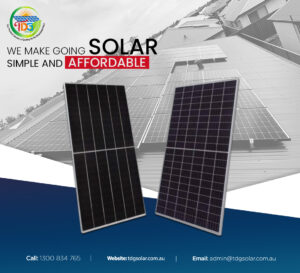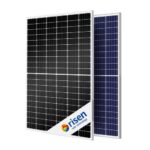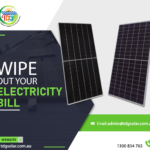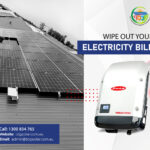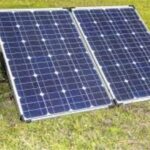Solar Panels Stirling -Switching to alternative energy sources has become critical in the twenty-first century. Solar power has developed as an excellent source of energy for Stirling homes, offices, and other businesses. Also, Solar panels are commonly known as photovoltaic (PV) panels, are used to convert sunlight. Light is made up of energy particles known as "photons," which are turned into electricity.
Table of Contents
How Do Solar Panels Work?
Solar Panels that are Stirring When sunlight strikes the semi-conductive material of a solar PV cell, light energy is absorbed in the form of photons. It frees up numerous electrons, which then float around freely in the cell. Solar PV cells are meticulously engineered such that negatively and positively charged semiconductors are pressed together to generate an electric field.
The resulting field forces the floating electrons to move in one direction, namely towards the conductive metal plates that line the cell. This movement is known as an energy current. The intensity of the current determines how much power each cell can produce. When the free-floating electrons collide with the metal plates, the current is directed into wires, allowing electrons to travel as they would in any other source of energy generation.
Understanding The Current Flow
When the solar panels create electricity, it travels via a network of cables and into an inverter. Solar panels, on the other hand, generate direct current (DC), whereas buildings normally require alternating current (AC). An inverter is a device that converts direct current (DC) power into alternating current (AC) electricity, making it more usable in everyday situations. Once the electricity is converted to alternating current (AC), it is routed from the inverter to the breaker box (electrical panel) and disseminated throughout the building. This electricity may now be utilized to power solar-powered gadgets.
What Happens to the Unused Power?
The amount of power not consumed by the breaker box is diverted to the utility grid via the utility meter. The utility meter is a device that measures the amount of power flowing between the grid and your property. If your solar energy system generates more power than you consume, the meter reverses and you earn credits for the surplus via net metering. When you use more power than your solar panel system provides, you draw it from the grid through the meter, and the meter continues to work normally.
Solar Panel Types
With the advancement of technology, there are now various types of solar panels available:
Monocrystalline
Monocrystalline is the most efficient kind of solar panel. A single crystal is used to make these silicon panels. They are, nevertheless, the most costly sort of panel.
Polycrystalline
Polycrystalline panels are not as efficient as monocrystalline panels, but they are a wonderful low-cost choice. These silicon cells are the result of the fusion of several silicon crystals.
Thin-Film
Thin-film solar cells, which are made of amorphous silicon, are the most flexible solar panels. They are, however, the least efficient.
Are Stirling Solar Panels Worth It?
To assess if solar panels are worthwhile, you must first recognize that they are a long-term investment. Installing a solar panel system may be a little pricey at first. However, the advantages will be felt gradually. Yes, solar panels are worthwhile in some circumstances. You'll get your money's worth if you create enough energy and live in the same residence for a long period. Solar panels eventually pay for themselves over time.
What Materials Are Used in Solar Panels?
Solar panels are made up of several solar cells that collect sunlight and convert it into electricity. The fundamental material in most solar PV panels is crystalline silicon wafers. Approximately 95 percent of all solar panels on the market use silicon to manufacture semi-conductors. The remaining 5% is reliant on experimental technologies such as organic PV cells.
Solar Panel Types Semi-conductors are in charge of creating electricity. When they come into touch with sunlight, their electrons are knocked loose, resulting in the generation of electricity. Metal, glass, wire, and plastic are also components of PV cells. Solar panels are often covered with a layer of glass. There is also an anti-reflective layer to safeguard the sensitive silicon cells while enabling light to travel through.
This complete framework is supported by plastic or polymer frames that must be installed on both rooftop and ground-mounted solar panel installations.
How Long Does a Stirling Solar PV Installation Take?
Before deciding on a supplier, you may get a quotation and see how long the full procedure will take. The length of time depends on the intricacy and size of your Stirling solar panel installation. It takes a few weeks to acquire quotations and have installers come to your house. However, after you've decided on a supplier, the process won't take long. When the scaffolding is finished, the actual installation of regular-sized panels should take no more than a day. Larger panels, on the other hand, may take longer.

